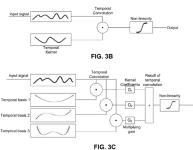I am having a really dark day and feel pissed about the whole thing.
Usually I can roll with the everyday ups and downs but not today.
Could someone please give me some advice or positive thoughts
Hey Mate.
I hear you.
It's been a hard period for many (including myself), for some time now.
And it sucks when things don't work out quite how we would have liked.
These market conditions have been tough going for many and it's all somewhat exacerbated by the political tensions and uncertainty which has rapidly become the new norm.
I think in times like these, it's good perhaps, to take a time out, in whatever way makes sense to
you, and is conducive to
your unique circumstances.
Perhaps find a way to get yourself some greater perspective and try and look at your situation afresh and
perhaps reevaluate your strategy.
Keep what's working and prune what's not.
I personally am still a believer in what BrainChip can offer, but the time it is taking to prove out commercially is testing many's patience.
And it may
not succeed.
We have to be realistic in this regard and remain accountable to both ourselves and those who rely upon us.
That's part of the risk/reward scenario we each must weigh up for ourselves on an ongoing basis.
There are many who will try and persuade you one way or the other and if you are reading from the crapper I would suggest giving it a miss for a while. Here is a more generally balanced environment and the unrelenting toxicity over there can be wearing and not conducive to good mental health.
I can't, in good conscience, advise you on any particular course of action but would suggest that tomorrow is a new day, a new financial year and that often its darkest just before the dawn.
Mere platitudes I know, but rooted in some tried and tested experience.
Good luck to you and all the other honest holders in good faith, out there.
I think we deserve a win.

